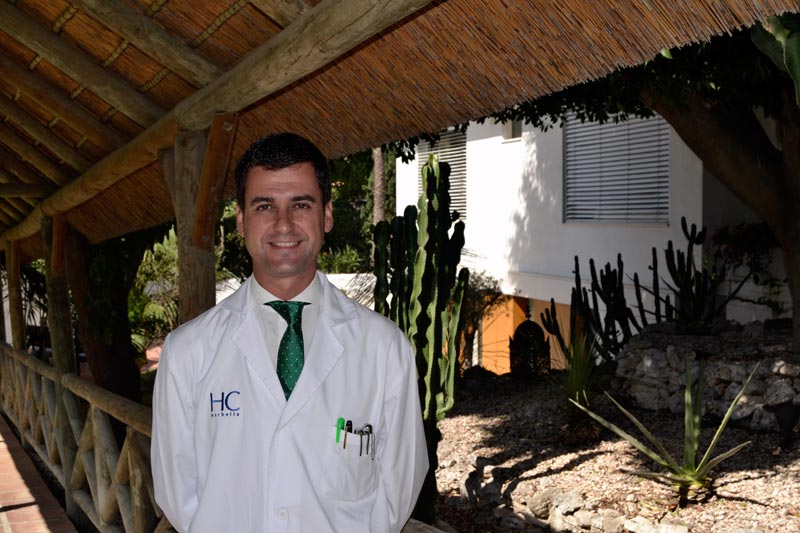It is difficult to discuss breast cancer as a single disease, with one treatment and one course.
When we talk about breast cancer we are referring to a group of diseases. Although they are characterised by having their origin in the breast, they differ greatly according to their particular, specific characteristics: whether there is hormone receptor expression or not, whether there is overexpression of a gene called HER2 or by each cell’s aggressive or growth capacity. Additionally treatments can vary according to the initial stage of the disease and the selected treatment regime.
The sum of all these factors, the development of excellent new treatments and rising awareness within the population have resulted in more frequent, early diagnosis rather than diagnosis at an advanced stage. Extraordinarily good results have been achieved, with an even greater number of patients having long survival times, presenting us with new challenges and requiring us to reduce the toxicity of medical interventions to a minimum.
Medical advances, especially in Oncology, are common, sometimes being developed so quickly that treatments become obsolete or conventional in a very short period of time. In the last few months new treatment regimens have been introduced which have radically changed the treatment and natural progress of certain subtypes of breast cancer, improving prognosis and notably increasing survival of our patients.
Tumour cells which overexpress a specific gene called HER2 + classically result in more aggressive disease. However, development of a monoclonal antibody (McAb) called trastuzumab (Herceptin) more than a decade ago significantly improved the tumour response and the prognosis for these patients.
A few months ago another anti-HER2 McAb became available called pertuzumab (Perjeta), used in addition to trastuzumab, it increases the treatment response rate by almost fifty per cent, therefore increasing patient survival whilst also improving quality of life as there are hardly any additional side effects. This treatment used in patients with advanced disease, can also be used prior to surgery, achieving excellent responses. It allows a higher rate of conservative treatment and reduces the number of mastectomies required, considerably increasing the number of those who recover.
Another breast cancer subgroup is comprised of those patients who present hormone-dependent tumours, in other words, their growth depends greatly on the action of female hormones. Therefore blocking the function of these hormones achieves control and slows down the advance of the disease without causing any significant toxicity.
Usually these conditions progress slowly, and are sometimes indolent, they can remain controlled by hormone treatment for long periods of time. However, once the limited lines of these treatments were exhausted, we were obliged to start chemotherapy, sometimes aggressive and toxic, giving patients symptoms which they previously didn’t have. Recent studies have included the use of another new drug called palbociclib (Ibrance), a small-molecule inhibitor of some enzymes known as cyclin-dependant kinases (CDK4 and CDK6). Used in addition to hormone therapy it allows us to continue treating new patients with the aforementioned characteristics without the use of chemotherapy or more toxic treatment, reversing what has up until now been referred to as hormone resistance.
Finally, as already mentioned, the high recovery rate is constantly increasing, leading to the appearance of a new group of patients who are not ill and who have long survival times. For this reason we must avoid, whenever possible, medium or long term toxic effects leading to iatrogenic conditions and/or secondary constraints on interventions.
Treatments based on radiotherapy are absolutely necessary and a basic pillar in the treatment of breast cancer. Despite improvements and technical innovation, they are not exempt from effects which may be long term. Toxicity is more significant when it affects vital organs such as the heart and lungs. With this in mind radiation given has always been reduced, as far as possible, to a minimum, especially in tumours of the left breast due to its proximity to both organs. New treatments with proton beam radiation to the left breast achieve excellent results compared to conventional radiotherapy and avoid damage to the heart and lungs, pneumonitis and heart failure, making it a supplementary, local treatment for the near future.
Diagnostic advances in the treatment and monitoring of breast cancer are innumerable with the human resources and materials invested unimaginable. It is impossible to put into words the satisfaction we obtain with each success achieved.

Dr. Alejandro Riquelme Oliveira
Department Of Medical Oncology
Hospital HC Marbella International Hospital
At HC Marbella we support research and innovation to increase patients’ quality of life and, of course, survival.
November 9, 2016
lesen Sie Nachrichten
Tel.: +34 952 908 628
+34 609 148 799
952908898 Onkologie
951829978 Bildgebende Diagnostik
951829947 Gynäkologie
952908897 Fertilitäts-Zentrum
951829947 Physiotherapie